|
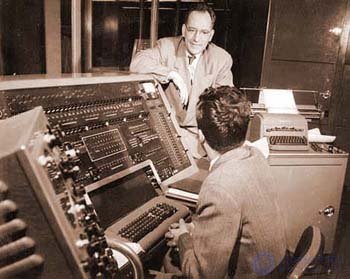
UNIVAC and John Mauchly (machine developer)
|
In 1951, work was completed on the creation of UNIVAC ( Univ ersal A utomatic C omputer). The first sample UNIVAC-1 machine was built for the US Census Bureau. A synchronous, sequential computing machine UNIVAC-1 was created on the basis of the ENIAC and EDVAC computers. It worked with a clock frequency of 2.25 MHz and contained about 5000 electronic tubes. The internal storage capacity of 1000 12-bit decimal numbers was performed on 100 mercury delay lines.
This computer is interesting in that it was aimed at a relatively mass production without changing the architecture and special attention was paid to the peripheral part (input-output means).
The weekly "Computerworld"
№09-2001 PC AGED 20 YEARS (History of development over the past 20 years)
# 25-2001 FIFTY YEARS TO THE FIRST COMMERCIAL COMPUTER (In 1951, the United States Census Bureau was launched into the work of UNIVAC I)
|
|
In early 1951, the Manchester Mark-1 prototype was replaced with the F erranti Mark-1 computer designed for the needs of the university and external users.
The power of Ferranti Mark-1 exceeded the needs of not only the department, but even the university, and therefore time was allocated for solving problems of government agencies, other universities, scientific research associations, industrial firms. On average, the computer worked 100 hours a week.
In 1951, the first serial computers Ferranti Mark-1 and LEO-1 appeared in England. And after 5 years, the company Ferranti released the Pegasus computer, in which the concept of general-purpose registers was embodied for the first time.
|
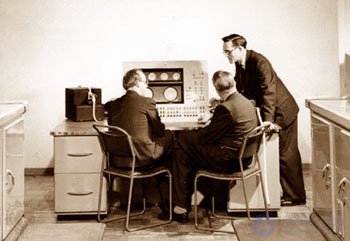
Ferranti Mark-1
|
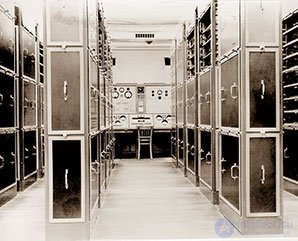
LEO-1
|
|
|
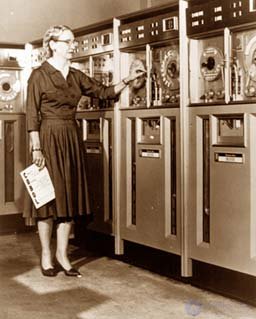
Grace Hopper
|
A US Navy officer and team leader for programmers, while the captain (later the only woman in the Navy was admiral), Grace Hopper (Grace Hopper) developed the first broadcast program that she called the compiler (Remington Rand). This program produced a broadcast on the computer language of the entire program, recorded in a convenient for processing algebraic form.
|
|
Jay Forrester (Jay Wright Forrester, 07/14/1918) patented memory on magnetic cores . For the first time such a memory was used on the Whirlwind-1 machine (Whirlwind-1). It consisted of two cubes with 32x32x17 cores, which provided storage of 2048 words for 16-bit binary numbers with one bit of parity.
In the Whirlwind-1 machine, a universal non-specialized tire was used for the first time (interconnections between various computer devices become flexible) and two devices were used as input / output systems: Williams cathode ray tube and punched tape typewriter (Flexoriter).
|
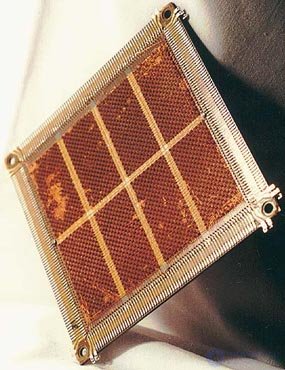
Magnetic core memory
|
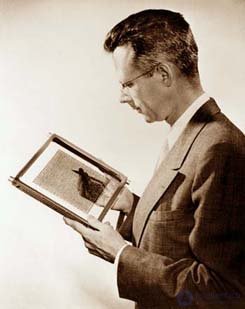
Jay forrester
|
|

Whirlwind-1
|
| |
In the UK in June 1951, at the conference at the University of Manchester, Maurice Wilks presented the report "The Best Method for Designing an Automatic Machine," which was the pioneering work on the fundamentals of microprogramming. Maurice Wilkes realized his idea of micro programming in 1957 when creating the EDSAC-II machine.
In 1951, M. Wilkes, together with D. Wheeler and S. Gill, wrote the first programming textbook "Compilation of Programs for Electronic Calculating Machines" (Russian translation - 1953).
|
|
The trial operation of the BESM-1 domestic computer has begun.
In the USSR in 1952-1953, A.A.LAPUNOV developed an operator programming method (operator programming), and in 1953-1954 L.V. Kantorovich - the concept of large-block programming.
|
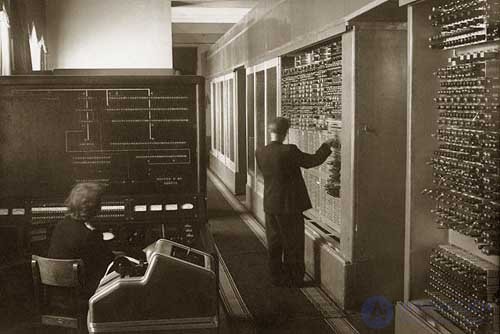
BESM-1
|
|
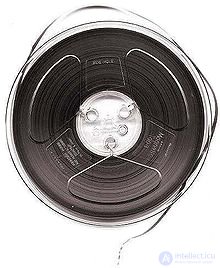
|
The IBM firms released their first industrial computer, the IBM 701, which was a synchronous parallel-action computer containing 4,000 electronic tubes and 1,200 germanium diodes.
The beginning of the history of magnetic tape as a means of storing computer data is considered to be the spring of 1952, when the tape driver of the Model 726 was first connected to the IBM Model 701 machine. The recording density was 100 characters per inch, at a speed of 75 inches per second.
|
Magazine "Open Systems" №03-2003 MAGNETIC TAPES, FROM PAST TO FUTURE
|
The company Remington-Rang in 1952, released a computer UNIVAC-1103, which worked 50 times faster UNIVAC-1. Later in the UNIVAC-1103 software interrupts were first applied .
|
|
|
The first serial domestic computing machine Strela has been released .
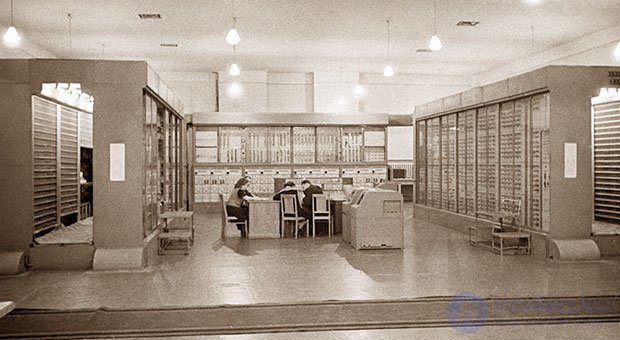
Arrow
|
At the Massachusetts Institute of Technology, the first experimental computer using TX-0 transistors was developed (in 1955 it was put into operation).

TX-0
|
| |
The first high-speed printer for the UNIVAC-1 computer was developed, which in line-by-line mode printed a whole line of 120 characters almost simultaneously (the idea of a line-based printer became feasible through the use of a rotating drum with a font character set). He read and print data from a magnetic tape at a speed of 600 lines per minute.
|
|
IBM has applied for the invention of the "channel" I / O , a specialized processor that implements data transfer and I / O control schemes.
In November 1954, IBM released the first report related to the creation of the FORTRAN language ( FOR mula TRAN slator). The language was developed by a group of programmers led by John Backus (John Backus, 12/03/1924 - 03/17/2007).
|
|
|
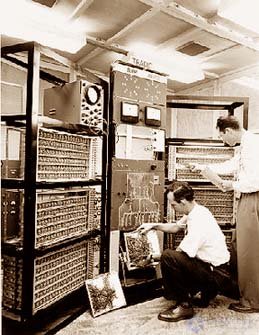
TRADIC, 1954
|
TRADIC (standing for TRA nsistorized DI gital C omputer) - the first transistor computer of Bell Laboratories - contained 800 transistors, each of which was enclosed in a separate case.
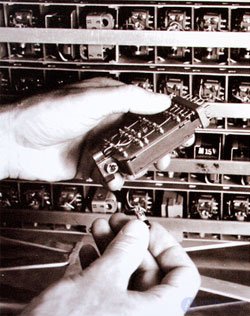
TRADIC transistor
|
|
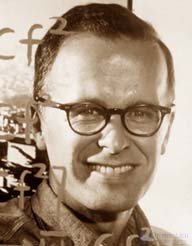
John Beckus
|
In 1955, the first algorithmic language FORTRAN (FORmule TRANslator - formula translator) was released. It was used to solve scientific, technical and engineering problems and was developed by IBM employees under the leadership of John Backus (John Bakus, 12/03/1924 - 03/17/2007). The most popular version was called FORTRAN IV, released in 1962.
Newspaper "INFORMATIKA" JOHN BEKUS
BEST CLASSIC
|
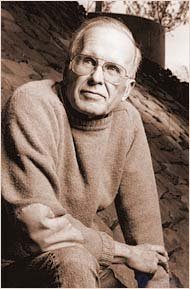
John Beckus many years later
|
|
IBM has released an improved version of the machine IBM 701.
IBM 704 was notable for its high speed, it used index registers and presented data in the form of a floating point.
After the IBM 704 computer, the IBM 709 was released, which in architectural terms approached the second and third generation machines. In this machine, indirect addressing was first used and I / O channels first appeared.
|
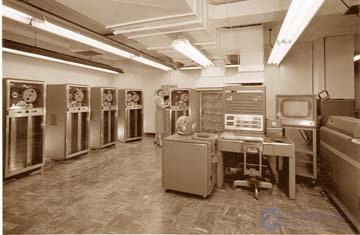
IBM 704
|
|

Disk storage devices for IBM 305 and RAMAC-650 with a capacity of 5 MB
|
IBM has developed floating air cushion magnetic heads . The invention allowed to create a new type of memory - disk storage devices . This is the first hard drive. It was 24 ", contained 5 MB of data and cost more than a million dollars.
The first storage devices on RAMAC disks (Random Access Method of Accounting and Control) appeared in IBM 305 machines. The storage device consisted of 50 aluminum discs (61 cm in diameter) with a magnetic coating that rotated at a speed of 1200 rpm. On the disk surface there were 100 tracks for recording data, 10,000 characters each. The information capacity of this giant was 5 MB (5 million bytes).
Alan Shugart (Alan Field Shugart, September 27, 1930 - December 12, 2006) was the author of the world's first hard disk drive (HDD). In 1971, he showed his new development - a floppy disk 8 inches. The premiere took place on September 13, 1956, when the IBM 305 RAMAC was introduced.
|
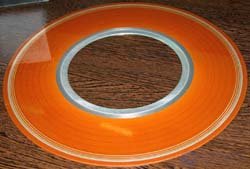
Disk storage plate
|

September 13, 1956
representation of the IBM 305 RAMAC computer HDD
|
|
|
Werner Buchholz in 1956 introduced the term BYTE when designing the first IBM 7030 supercomputer for a beam of six bits simultaneously transmitted in input-output devices (six pieces), later in the same project they expanded the byte to eight ( 2 8 ) bit.
According to one of the versions, the word byte occurred as an abbreviation of the phrase BInary digiT Eight (“binary number eight”), and in the resulting bite, the letter i was replaced with y. This was done to avoid confusion with the already existing bit term. Another hypothesis says that byte is an abbreviation of BinarY TErm (“binary term”).
|
|
| |
G.Simon, A.Newell, J.Show created GPS - the universal task solver.
|
|

NEC-1101, 1958
|
On May 27, 1958, a meeting of leading programmers began in Zurich in order to obtain a common programming language for the entire computer community. The idea to create Algol (ALGOL, from ALGO Language Language - an algorithmic language) arose mainly in connection with the widespread use of the Fortran language. In the same year, the first version of the programming language ALGOL 58 appeared.
The Japanese corporation NEC developed the first Japanese computer, the NEC-1101 and 1102.
In 1958, the first Bell 101 modem from AT & T was released. They were able to work on ordinary telephone lines. The development of digital modems was originally made for the needs of the Semi-Automatic Ground Environment Semi-Automated Control System of the United States and Canadian Air Defense Forces (SAGE) and used to communicate radars with air bases and command centers.
In 1962, the company launched and launched the first commercial Bell 103 modems - the first full duplex modems, i.e., with the possibility of two-way data transfer, operating at 300 baud (bits per second).
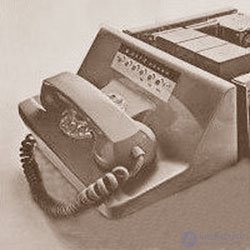
Bell 103
|
|
Douglas Ross has developed an ATP language for programming CNC machines.
J. McCarthy and K. Streychi proposed the concept of sharing computer time .
|
|
The domestic computer Setun , operating in the ternary number system, was released . It was developed in the problem laboratory of the computing center of Moscow State University. The prototype was made directly by the laboratory staff. The car was called "Setun" - after the river near Moscow University.
|
|

Prototype Sutun Machine
|
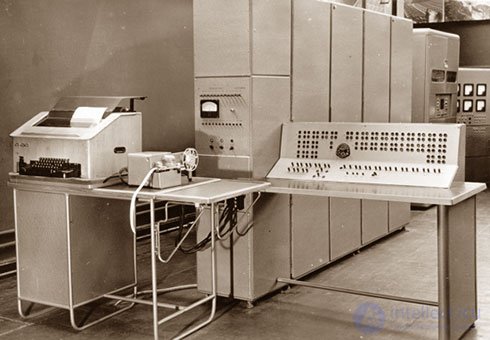
Industrial Model of Setun Machine
|
|
Comments
To leave a comment
History of computer technology and IT technology
Terms: History of computer technology and IT technology